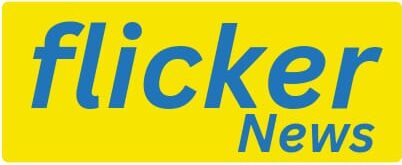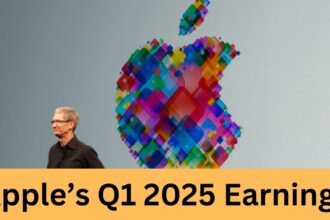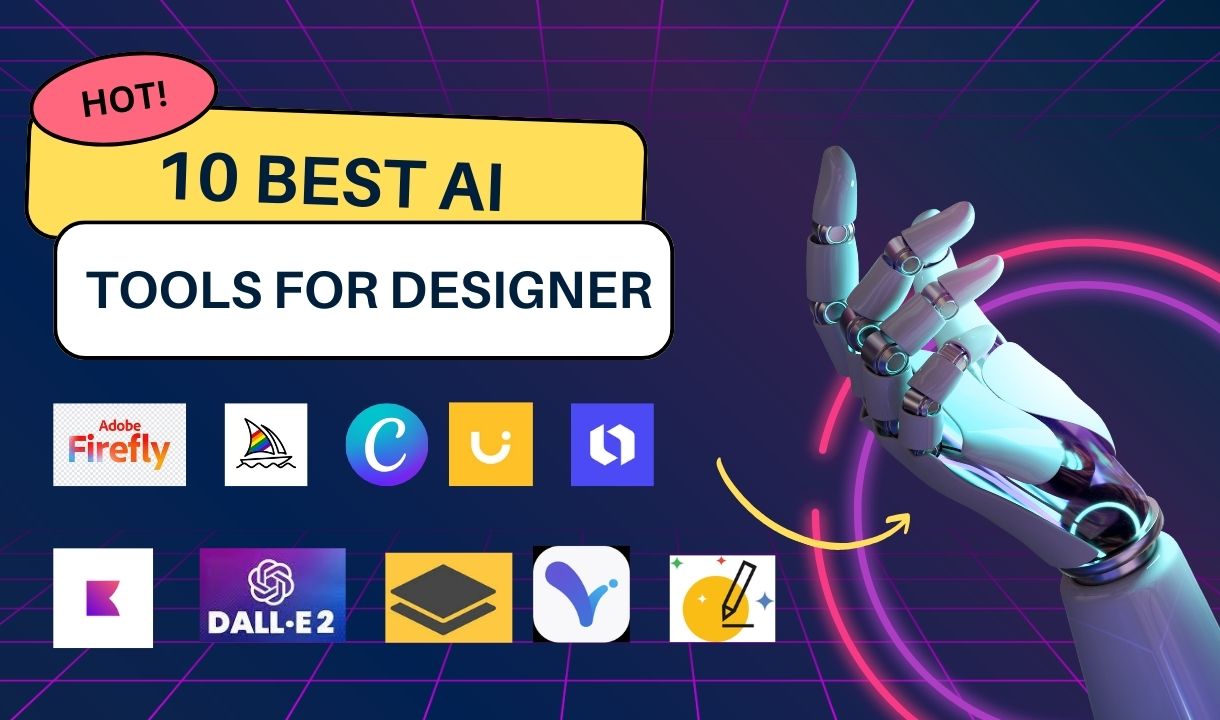AI Tools for Designers: In 2024, the landscape of graphic design will be significantly shaped by artificial intelligence (AI) tools. These tools not only enhance creativity but also streamline workflows, making them indispensable for designers. Here’s a look at 10 useful AI design tools that every designer should consider incorporating into their toolkit.
10 Useful AI Tools for Designers
| AI Design Tool | Best For | Starting Price | Free Option | User Reviews (avg) |
|---|---|---|---|---|
| Adobe Firefly | Overall best AI design tool | $4.99/month | ✔️ | ⭐⭐⭐⭐⭐ (4.5/5) |
| MidJourney | Generating realistic images | $10/month | ✔️ | ⭐⭐⭐⭐ (4.4/5) |
| Canva | Creating templated designs | $119.99/year | ✔️ | ⭐⭐⭐⭐⭐ (4.7/5) |
| Uizard | Rapid prototyping and UI design | $19/month | ✔️ | ⭐⭐⭐⭐ (4.35/5) |
| Looka | AI-generated logos | $20/one-time fee | ❌ | ⭐⭐⭐⭐ (4/5) |
| Khroma | Custom color palette generation | Free | ✔️ | N/A |
| DALL·E 2 | Advanced image generation from text | Varies by usage | ✔️ | N/A |
| Remove.bg | Background removal for images | Varies by usage | ❌ | N/A |
| Visily | Wireframing and prototyping | Free | ✔️ | N/A |
| AutoDraw | Turning sketches into polished illustrations | Free | ✔️ | N/A |
Tool Breakdown: AI Tools for Designer
- Adobe Firefly: This tool is integrated with Adobe’s suite, offering features like generative fill and text-to-image capabilities, making it ideal for both beginners and experienced designers.
- MidJourney: Known for its ability to create stunning visuals from text prompts, MidJourney is perfect for designers looking to generate unique images quickly.
- Canva: A user-friendly platform that provides a range of templates and design elements, making it suitable for those who want to create professional-looking designs without extensive design skills.
- Uizard: This tool excels in turning sketches into interactive prototypes, making it a valuable asset for UI/UX designers.
- Looka: A straightforward logo maker that uses AI to generate logos based on user inputs, ideal for startups and small businesses.
- Khroma: A color palette generator that learns your preferences and helps you create cohesive color schemes tailored to your style.
- DALL·E 2: Developed by OpenAI, this tool generates detailed images from text descriptions, offering designers a way to visualize concepts quickly.
- Remove.bg: An essential tool for designers needing to remove backgrounds from images efficiently, streamlining the editing process.
- Visily: Focused on wireframing, Visily helps designers create prototypes with ease, enhancing collaboration and speeding up the design process.
- AutoDraw: This tool leverages AI to refine rough sketches into polished illustrations, making it useful for quick drafts and brainstorming sessions.
Conclusion: AI Tools for Designer
These AI tools are revolutionizing the graphic design industry by enhancing creativity, improving efficiency, and providing designers with innovative solutions to common challenges. As AI continues to evolve, staying updated with these tools will be crucial for designers looking to maintain a competitive edge in their work.
What are the main benefits of using AI tools in graphic design
Main Benefits of Using AI Tools in Graphic Design
- Efficiency and Speed: AI tools automate repetitive tasks such as image cropping, resizing, and background removal, significantly reducing the time required to complete design projects. This allows designers to focus on more complex and creative aspects of their work, ultimately speeding up project delivery.
- Enhanced Creativity: AI can generate unique design ideas and suggestions, helping designers overcome creative blocks. By providing fresh perspectives, AI tools enable designers to explore new concepts and push creative boundaries.
- Consistency in Branding: AI ensures that design elements remain consistent across various platforms and materials. By analyzing brand guidelines, AI tools can maintain a cohesive brand identity, which is crucial for effective marketing and communication.
- Personalization: AI algorithms can analyze user data to create highly personalized design solutions. This capability allows designers to tailor marketing materials and user interfaces to individual preferences, enhancing user engagement.
- Cost-Effectiveness: Utilizing AI tools can reduce design costs by minimizing the need for extensive human resources. This is particularly beneficial for startups and small businesses that may have limited budgets for design services.
- Rapid Prototyping: AI-powered tools facilitate quick translation of design concepts into interactive prototypes. This allows designers to gather feedback and conduct usability testing early in the design process, leading to more user-centered final products.
- Improved Accessibility: AI can help identify and suggest modifications to enhance the accessibility of designs, such as ensuring appropriate color contrast for visually impaired users. This promotes inclusivity in design practices.
- Data-Driven Insights: AI tools can analyze design trends and user preferences, providing valuable insights that help designers make informed decisions. This data-driven approach enhances the effectiveness of design choices.
- Generative Art: AI can create generative art based on predefined parameters, allowing designers to explore new creative horizons and produce unique designs that evolve over time.
- Streamlined Collaboration: AI tools can facilitate better collaboration among design teams by organizing workflows and managing tasks, which enhances productivity and communication within teams.
In summary, the adoption of AI tools in graphic design not only boosts efficiency and creativity but also ensures consistency, personalization, and accessibility in design outputs. As AI technology continues to evolve, its impact on the graphic design industry is expected to grow, offering even more innovative solutions for designers.




